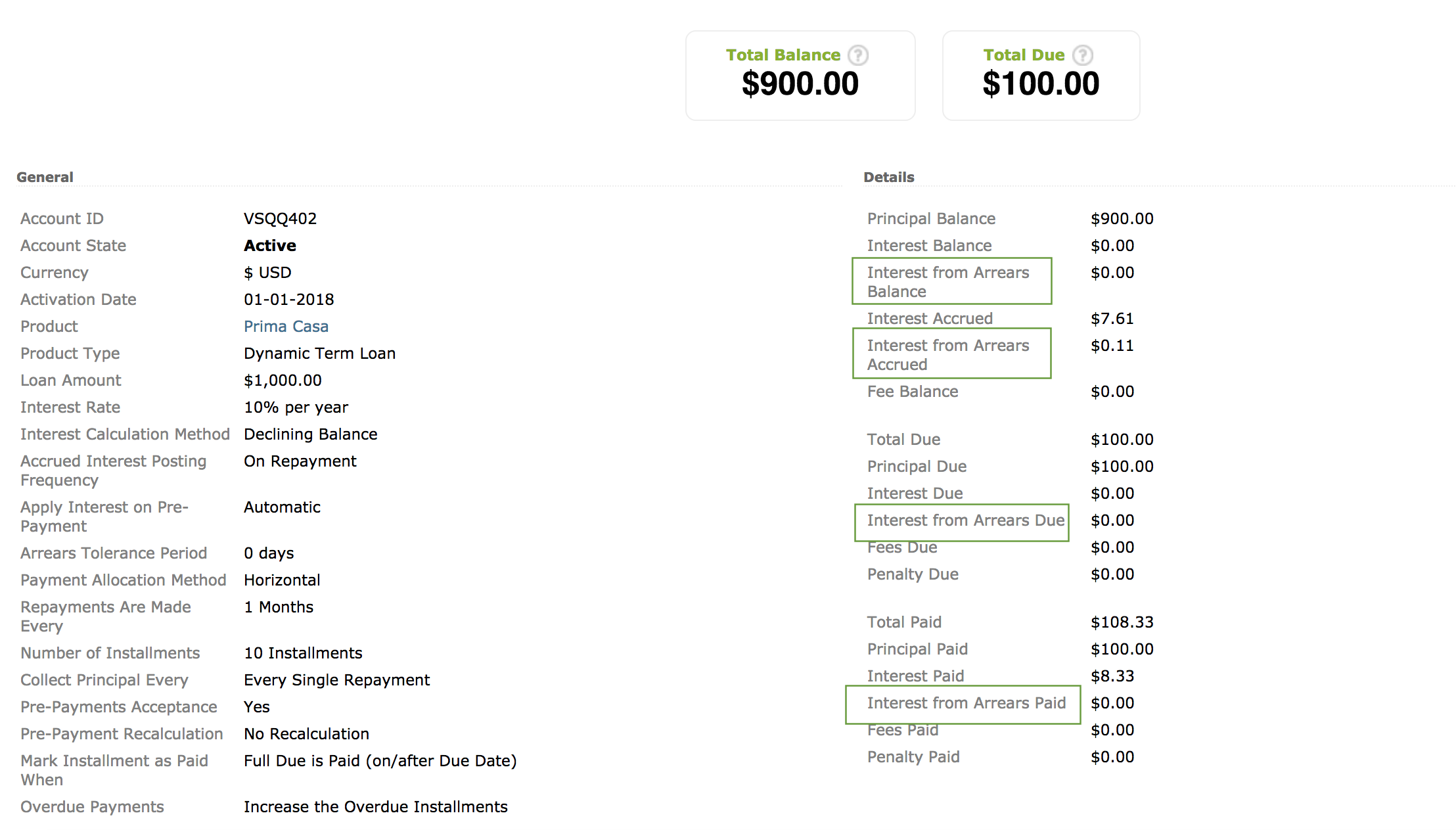- 28 Mar 2023
- 3 Minutes To Read
- Print
- DarkLight
- PDF
Working With Overdue Loans
- Updated On 28 Mar 2023
- 3 Minutes To Read
- Print
- DarkLight
- PDF
When a borrower fails to make a scheduled repayment on time, their loan is said to have gone into arrears. Depending on the arrears settings used when creating a product, loans will be marked as having gone into arrears either as soon as a due date has been reached and no payment registered, or, only after a certain grace period. With a grace period, a product can be created with, say three days of grace within which a loan will be marked as late but not in arrears. By doing this, borrowers can be given a little leeway before penalties or increased interest rates for loans in arrears are applied to their account.
Identifying late repayments
When viewing a loan account, you will see up to two indicators once a borrower has missed a scheduled repayment. For products with no grace period, a loan account will be marked as in arrears from the day after the due date. This is shown in the loan account overview page as Days In Arrears.
For a product with a grace period, a loan will intially be marked simply as Late with the Days Late visible from the overview page. Any late payment will have an impact on the borrower's On Time Repayment Rate, which is displayed in their Loan History.

When the grace period ends and there has still not been a repayment made, the account will also start displaying the count of Days In Arrears and the state of the loan account will change from Active to In Arrears. As you can see from the example image, the Days in Arrears count shows the number of days late, minus the grace period configured for the product.
Interest from arrears vs. regular interest in case of late installments on dynamic loans
Mambu provides a breakdown of the costs of loans, allowing you to distinguish between the regular interest calculated using the Outstanding Principal Balance (in case of late installments) and the interest from arrears as a breakdown of this regular interest.
Interest from arrears
Interest from arrears is calculated separately and captured at the account and transaction level in custom views and custom filters.

The following formulas are used:
- for simple and capitalized interest
- for compound interest
Regular interest in case of late installments
The regular interest in case of late installments, also known as late interest, depends on the Accrue late interest option at the product level. For a loan to accrue late interest, the option must be selected. Otherwise, interest will always be calcuated using the Expected Principal Balance regardless if there are late payments or not.
This is how interest is calculated when installments are not paid on time and the loan accrues late interest:
- for simple and capitalized interest
- for compound interest
For more information about the different balances of a loan, see Loan Account Overview Details.
Example with simple interest
Loan account setup:
- Loan Amount = USD1000
- Interest Rate = 10% per year
- Number of installments = 5
- First installment: March 1st, 2022
- Principal amount = USD200
- Interest amount = USD8.33
- Installment state: Late
We calculate the interest from arrears on the next due date, April 1st:
Interest from arrears = 200 * 10% * 30/360= USD1.67
If the installment had not been late, the interest amount would have been calculated as follows:
Interest = 800 (Expected Principal Balance) * 10% * 30/360 = USD6.67
Since the installment is late, the interest is calculated as follows:
Interest = 1000 (Outstanding Principal Balance) * 10% * 30/360 = USD8.33, currency rounded to 8.34. This amount reflects the late interest.
Note that USD8.34 ( interest calculated at Outstanding Principal Balance) is the sum between USD6.67 (expected interest calculated at Expected Principal Balance) and USD1.67 (Interest from Arrears).
So the interest applied by Mambu on April 1 (of USD8.34) is late interest since installment from March 1, was not paid and it includes the interest from arrears amount.
The following considerations should be kept in mind when handling overdue loans:
- Interest from arrears is always part of the regular interest. It should never be added to the regular interest balance as this would mean duplicating the amount.
- Interest from arrears becomes due immediately after application. It will be displayed in the Interest from Arrears Due balance in the account's overview page.
- Interest from arrears is always paid first.
- The arrears tolerance period does not affect the interest from arrears. Interest from arrears will be calculated even if we have an arrears tolerance period set on the account.


